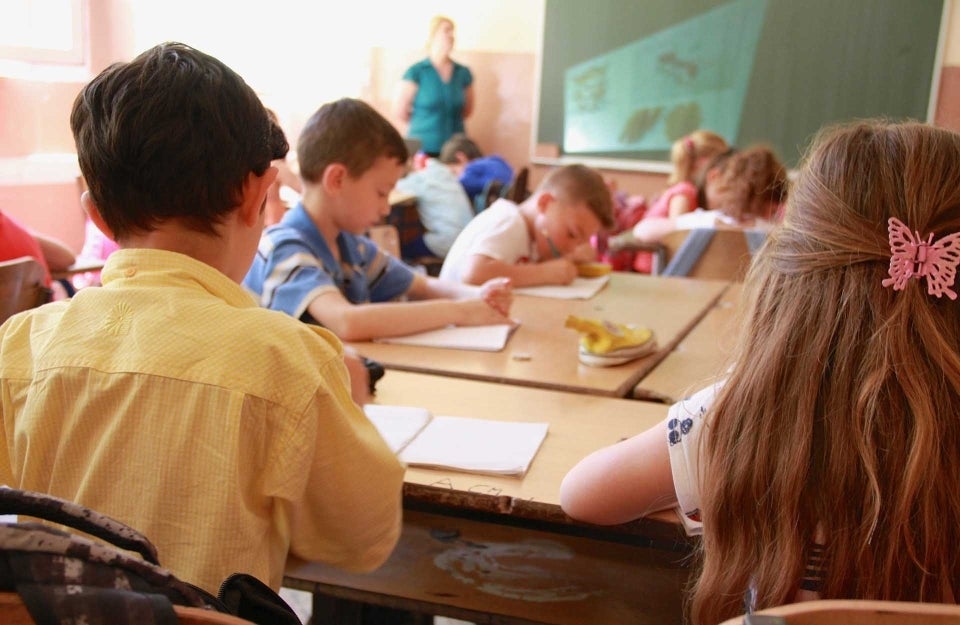Understanding Why Teachers Discriminate Against Minority Students
Teachers in Hungary are more likely to discriminate against Roma students than non-Roma students.

Photo Credit: Megan Soule / Unsplash
Teachers spend their time educating young people, imparting both intellectual knowledge and practical life skills, in an attempt to help children grow into adults. They often do this for low pay and little thanks. They are the best of us, or at least they’re supposed to be.
But teachers are regular people, too. And regular people have biases that sometimes inhibit their abilities to do their jobs.
A new study authored by Research Scientist Emile Bruneau found that teachers in Hungary are more likely to recommend Roma students for the lowest-track secondary school, as compared with non-Roma students. The study also found that this is due to blatant dehumanization — thinking another group is less evolved and/or civilized than your own — rather than affective prejudice, which is disliking people belonging to a particular group. In fact, the study shows that teachers with the lowest levels of prejudice were most likely to discriminate against Roma students when placing them in secondary school tracks.
“Teachers are a very interesting group to study because they tend to be very caring, prosocial people, and are the guardians of social mobility,” says Bruneau, Director of the Peace and Conflict Neuroscience Lab. “So we thought that this might be a case where more subtle or implicit biases would be driving the behaviors, rather than blatant dehumanization. But we found the opposite.”
Bruneau and colleagues recruited Hungarian teachers in training and asked them to evaluate profiles of 8th grade students to decide whether the students should be placed in the low, middle, or high secondary school track. Unbeknownst to the teachers, the researchers created the profiles to represent relatively equally qualified students and then assigned each with either a typical Roma name or a typical non-Roma name.
The teachers consistently placed equally qualified Roma students into lower tracks than their non-Roma counterparts, thereby giving better opportunities to non-Roma students and curtailing Roma students’ educational possibilities.
“Education, of course, is the number one way that you can improve your social rank in society,” Bruneau says. “In Europe in particular, the system is such that the secondary school you are placed in is hugely consequential. If you’re placed into the lowest track, even if you do great in secondary school, you’re not eligible to go to college.
In order to understand why the teachers discriminated against Roma students, the researchers next asked the teachers to complete a series of questions designed to measure blatant dehumanization, subtle dehumanization, and general dislike of the Roma. The researchers found that subtle dehumanization and general dislike did not predict the likelihood of discrimination, but blatant dehumanization did.
If teachers felt that the Roma were less evolved and civilized than non-Roma, they were likely to place Roma students into the lower educational tracks, regardless of their general like or dislike of the Roma. In fact, the teachers that were most likely to place the Roma students into lower educational tracks felt great warmth toward them while simultaneously considering them less evolved than non-Roma students.
The researchers point out that this type of dehumanization is associated with paternalism; it’s the type of dehumanization that results in policies like the forced removal of Indigenous children from their families to educate them in western-style boarding schools. In the case of this study, the teachers likely felt they were “helping” the Roma students by placing them in the lowest educational track.
“These types of behaviors are hard to explain,” Bruneau says, “because they seem to be motivated by general caring, yet they’re just as damaging to a population as outright hostility is. This study helps us begin to understand the psychological profile that is necessary to both feel warmly toward a population and think of them as less than human.”
Bruneau hopes this study will help guide future interventions for teachers. He says rather than focusing training solely on prejudice reduction, as is typical, we need to find a way to change perceptions about the essential nature of marginalized populations.
“In every country we’ve studied,” says Bruneau, “we’ve found at least one marginalized group that people report blatant dehumanization towards. Through our research, we hope to continue to chip away at erroneous perceptions that people around the world have and apply scientific principles toward peace.”
“Beyond Dislike: Blatant Dehumanization Predicts Teacher Discrimination” was recently published in Group Processes & Intergroup Relations. In addition to Bruneau, authors include: Hanna Szekeres, Eötvös Loránd University; Nour Kteily, Northwestern University; Linda R. Tropp, University of Massachusetts Amherst; and Anna Kende, Eötvös Loránd University.



